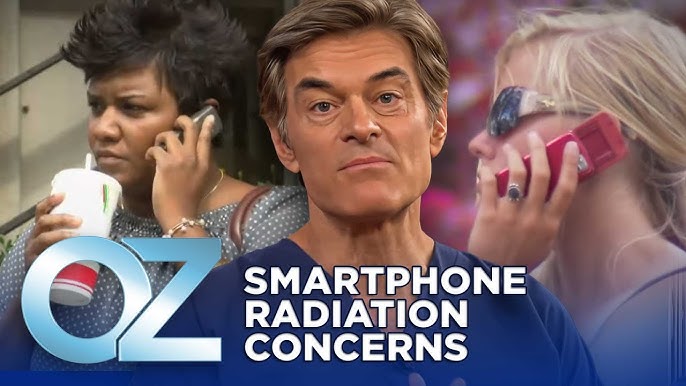
Smartphone Radiation Concerns: Uncovering the Truth | Oz Health
Share
View Full Segment Here:
https://youtu.be/LBe5DPrGNqw?si=99PzUrpE2oJCrQwH
Dr. Oz and Wireless Safety: Bringing Cell Phone Radiation Concerns to Light
For years, Dr. Mehmet Oz used his platform on the popular daytime television program, The Dr. Oz Show, to delve into a wide range of health topics, often bringing emerging concerns and preventative health discussions into the mainstream conversation. Among these topics was the complex issue of cell phone radiation safety, where Dr. Oz played a significant role in raising public awareness about potential risks and advocating for simple, precautionary measures.
Highlighting Potential Health Questions
Dr. Oz frequently addressed viewer concerns about the ubiquitous presence of cell phones in modern life. His show explored various facets of the issue, often featuring guests, expert opinions, and personal stories that highlighted potential areas for caution:
- Brain Health: Segments sometimes touched upon the ongoing research and debate surrounding long-term cell phone use and brain health, encouraging viewers to be mindful of how they use their devices.
- Children's Exposure: Recognizing that children's bodies are still developing, Dr. Oz often emphasized that their thinner skulls might absorb more radiation than adults', suggesting a need for greater caution with kids' device use.
- Reproductive Health: Concerns about male fertility were addressed, particularly the common habit of carrying phones in pants pockets close to the body, referencing studies suggesting potential impacts on sperm health.
- Specific Use Cases: The show also tackled specific scenarios, such as the potential risks discussed by some women who carried cell phones in their bras and later developed breast cancer in the same area, prompting discussions about safer carrying practices.
- Product Effectiveness: Dr. Oz even dedicated segments to investigating whether various cell phone cases marketed as "radiation-reducing" actually worked, or if some might inadvertently increase exposure.
By presenting these topics, Dr. Oz brought attention to questions being raised by some researchers and members of the public, encouraging viewers to consider the potential implications of their device usage patterns.
Championing the Precautionary Principle
While acknowledging the ongoing scientific debate and the position of regulatory bodies, a consistent theme in Dr. Oz's coverage was the importance of the precautionary principle – essentially, "better safe than sorry." He empowered his audience by consistently offering practical, easy-to-implement advice for reducing personal exposure to radiofrequency radiation:
-
Increase Distance: Emphasizing that radiation exposure drops significantly with distance, he advised using speakerphone or wired headsets instead of holding the phone directly to the ear.
- Limit Body Contact: He recommended against carrying phones directly against the body, such as in pockets or bras, suggesting purses or bags as alternatives.
- Reduce Use When Possible: Simple tips like texting instead of talking for short communications or limiting call duration were often mentioned.
-
Be Mindful of Signal: He noted that phones may emit more radiation when struggling with a weak signal (fewer bars).
- Protect Children: He strongly advocated for limiting children's non-essential cell phone use.
- Nighttime Habits: He advised against sleeping with cell phones near the bed, especially under the pillow.
Empowering Viewers Through Awareness
Through his accessible platform, Dr. Oz translated complex scientific discussions and potential concerns into understandable information for millions of viewers. He played a crucial role in making the public more aware of the radiofrequency radiation emitted by everyday devices and encouraged people to think more consciously about their relationship with technology.
While the scientific community continues its research into the long-term health effects of cell phone radiation, Dr. Oz's focus on this topic undoubtedly prompted many individuals and families to adopt safer habits. By highlighting potential concerns and offering straightforward, precautionary advice, he empowered his audience to make more informed choices about managing their exposure in an increasingly wireless world.
